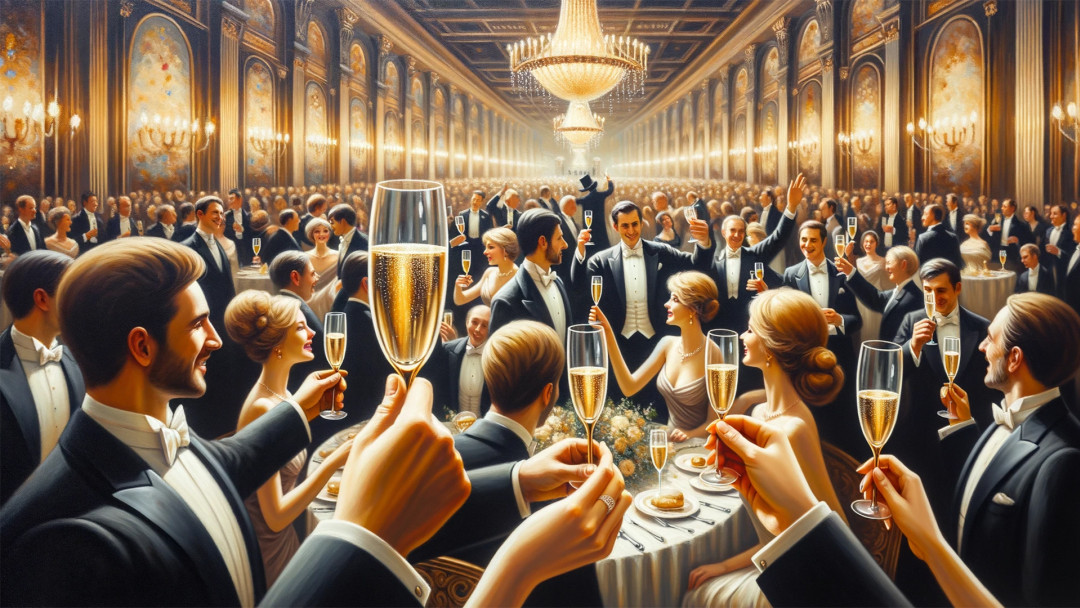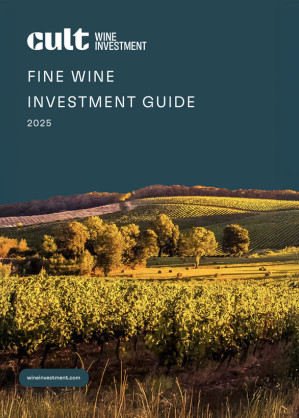
Champagne Uncovered: Your Top 20 Questions Answered
Champagne, often hailed as the drink of celebrations, carries with it an intricate blend of history, craft, and unique terroir. As we explore the frequently asked questions about this iconic beverage, we aim to highlight the nuances that make each Champagne sip an experience.
What distinguishes Champagne from other sparkling wines?
Champagne is a sparkling wine originating exclusively from the Champagne region in Northeast France. While there are many sparkling wines around the globe, only those produced in this specific region, adhering to stringent regulations, can proudly bear the name 'Champagne'. This distinctiveness is rooted in the region's unique terroir, traditional production methods, and stringent quality controls.
How is Champagne's effervescence created?
The hallmark bubbles of Champagne result from a secondary fermentation process. After the primary fermentation, a mixture known as the "liqueur de tirage", which comprises sugar and yeast, is added to the wine. When sealed in its bottle, the yeast consumes the sugar, producing alcohol and carbon dioxide. This CO2, trapped within the sealed environment, manifests as the signature effervescence we associate with Champagne.
Why can only sparkling wine from the Champagne region be called "Champagne"?
The name 'Champagne' is safeguarded by the Appellation d'Origine Contrôlée (AOC) designation in France. This protection ensures that only wines produced in the Champagne region following exacting standards and methods can use the title. It's a mark of authenticity, ensuring quality and preserving the heritage of this esteemed beverage.
What grape varieties are pivotal in Champagne production?
Champagne's character is moulded by three primary grape varieties: Chardonnay, which brings elegance and a crisp freshness; Pinot Noir, imparting body and depth; and Pinot Meunier, contributing fruitiness and a certain vibrancy.
What's the distinction between vintage and non-vintage Champagne?
Vintage Champagne is crafted from grapes harvested in a particular, outstanding year and reflects that year's climatic character. The harvest year is prominently displayed on the bottle. On the other hand, non-vintage Champagne is a blend of wines from several years. This blending ensures a consistent taste, embodying a Champagne house's signature style across vintages.
How does rosé Champagne attain its pink hue?
Rosé Champagne achieves its enticing colour in one of two primary methods: blending red wine with white Champagne or using the "saignée" technique. In the latter, grape juice is allowed a short contact period with the grape skins, absorbing colour before fermentation.
What do terms like "Brut" and "Demi-Sec" indicate about Champagne's sweetness levels?
These terms reference Champagne's dosage or the added sugar levels. "Brut" signifies a dry Champagne, typically with less than 12 grams of sugar per litre. "Demi-Sec", on the other hand, leans towards the sweeter side, with sugar content typically between 32 to 50 grams per litre. These designations help connoisseurs choose a Champagne that aligns with their sweetness preference.
How long can an unopened bottle of Champagne be kept for?
Non-vintage Champagne, designed to be enjoyed while fresh and vibrant, is best consumed within 3 to 4 years of purchase. Given their complexity and structure, Vintage Champagnes can age gracefully for decades, with some premium bottles reaching their peak after 10 to 15 years.
What's the ideal way to store Champagne?
Champagne should be stored horizontally, ensuring the cork remains moist preventing air ingress. A cool, dark environment with consistent temperatures between 10°C to 12°C is ideal. Protecting the bottles from strong odours, vibrations, and dramatic temperature fluctuations is also pivotal.
How should Champagne be served, and at what temperature?
To fully appreciate its nuances, Champagne should be served chilled, typically between 7°C to 9°C. It's advisable to gently cool the bottle in an ice bucket or refrigerator for several hours before serving. Avoid freezing or rapid chilling, as this can dampen its aromatic expression.

Fine Wine Investment Guide 2025
Download your guide to fine wine investing and discover how this unique, tangible, and tax-efficient asset can enhance portfolio diversification. Gain valuable knowledge and insights with this indispensable document for investors.
Is there a proper technique for opening a Champagne bottle?
Indeed, carefully opening a Champagne bottle ensures safety and preserves the wine's integrity. Start by removing the foil and loosening the wire cage. While holding the cork firmly with one hand and the base of the bottle with the other, gently twist the bottle (not the cork). As the pressure eases the cork out, control its release with a soft sigh rather than a pop, ensuring minimal gas and effervescence are lost.
How did Champagne earn its reputation as a celebratory drink?
Champagne's association with celebrations has historical roots. French kings were traditionally crowned in the Champagne region, and the wine from this area became synonymous with these grand occasions. Over time, its reputation grew, and it became the drink of choice for marking milestones, victories, and memorable moments, solidifying its status as the epitome of celebration.
Are there notable differences between major Champagne houses and smaller producers?
Major Champagne houses, like Moët & Chandon or Veuve Clicquot, are renowned for their consistent style and vast production. Their non-vintage Champagnes offer a signature taste that remains steady over the years. Smaller producers or "grower Champagnes", on the other hand, often produce wines that reflect the particularities of their vineyards and might vary more from year to year. Both have their unique charm: the reliability of big names and the distinctiveness and terroir-driven profiles of smaller producers.
What does the term "terroir" mean in the context of Champagne?
Terroir, a French term with no direct English translation, encapsulates the environmental factors that impart a wine with its unique character. In Champagne, it refers to the specific combination of soil, subsoil, climate, and vineyard aspect. This interplay determines the nuances and profiles of the grapes, giving Champagne its distinct identity.
How does Champagne pairing work with food?
With its effervescence and acidity, Champagne is incredibly versatile for food pairing. The bubbles and structure can cut through rich, creamy dishes, making it a great companion for oysters, caviar, and even fried delicacies. Rosé Champagnes, with their fruity notes, can complement dishes like duck or salmon, while sweeter varieties can be paired with desserts or even spicy cuisine.
Why do some Champagnes have a toasty or bready aroma?
These aromas arise from the "lees ageing" process. Lees are the residual yeast particles present post-fermentation. As Champagne matures on these lees, it takes on complex, bready, biscuity, or toasty notes, adding depth to its aromatic profile.
What is the significance of "riddling" in Champagne production?
Riddling, or "remuage", is a process wherein bottles are gradually tilted and rotated to collect the yeast sediments at the neck. Historically done by hand, it ensures the Champagne is clear and sediment-free. Once consolidated, the sediments are removed in a process called "dégorgement".
Why is Champagne often more expensive than other wines?
The cost reflects Champagne's meticulous production process, stringent quality controls, and the prestige of its terroir. From double fermentation to extended ageing and hands-on techniques like riddling, each step demands time, expertise, and care. Additionally, the limited geographical designation and global demand further elevate its value.
How do smaller bubbles indicate Champagne's quality?
Fine, persistent bubbles are often indicators of quality. They result from slow, natural fermentation and extended ageing, which produce smaller CO2 bubbles. These fine bubbles enhance the mouthfeel and contribute to the wine's overall aroma and tasting experience.
What's the future of Champagne in light of climate change?
Climate change presents challenges, with rising temperatures potentially affecting grape ripening and harvest timings. However, the Champagne region is proactive, researching adaptive viticultural practices and even considering new grape varieties to ensure the wine's continued excellence and authenticity in a changing environment.
Conclusion
Embarking on this exploration of Champagne has revealed the depth, care, and passion behind every bottle. From its storied past to its evolving future, Champagne remains an emblem of celebration, craftsmanship, and terroir. As the bubbles rise in each flute, they carry tales of dedication, innovation, and an undying pursuit of excellence. Champagne promises to turn moments into cherished memories, whether it's a special occasion or an everyday toast.
Related Content
Interested in learning more about wine trends, wine investment, or the wine industry in general? Check out our related content below for more insights and advice.
Remember, Cult Wines is more than just a source of wine knowledge. We're a gateway to smart wine investment, helping you turn your passion for wine into a potential source of financial growth. Whether you're a seasoned investor or a novice, we're here to guide you on this exciting journey.



